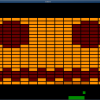Hey Guys,
So I know that the NeHe website is very popular for learning openGL. Ive done some reading and it seems like there were major changes regarding a fixed function pipeline vs shaders, etc. Im not exactly sure of the details. My question is, is the info on NeHe up to date for the version of openGL I should be focusing on, or is there a better resource? I am eventually accessing openGL thorugh LWJGL, but I am probably going to learn through C++ since its easier to find examples in it. I can always use Java and LWJGL later, its basically the same. I am basically looking for beginner tutorials, which are easy to find, but I dont know enough about what version of openGL I should find tutorials on. I wouldnt even know if I was using the right one or not since I really dont know the difference.
Best openGL resource
NeHe is deprecated, in newer OpenGL you have no fixed function pipeline and have to write shaders yourself. A lot of the old API calls are removed in OpenGL 3/4, which means that you have to do more of the work yourself, like creating your own matrices etc...
There is a large tutorial on it here (haven't checked it out myself, though. ) You should also check out the OpenGL documentation, which I use a lot myself since it tells you what the different API calls do.
There is a large tutorial on it here (haven't checked it out myself, though. ) You should also check out the OpenGL documentation, which I use a lot myself since it tells you what the different API calls do.
NeHe is deprecated, in newer OpenGL you have no fixed function pipeline and have to write shaders yourself. A lot of the old API calls are removed in OpenGL 3/4, which means that you have to do more of the work yourself, like creating your own matrices etc...
There is a large tutorial on it here (haven't checked it out myself, though. ) You should also check out the OpenGL documentation, which I use a lot myself since it tells you what the different API calls do.
Ahh I figured that much, the dates on the articles are really old. I cant get that link to work, are theyre any books/tutorials that cover the new stuff? I dont want to learn information that isnt up to date. What about those big openGl bibles on Amazon?
I must say Im going to need more than just the API documentation. Im really new to graphics programming so I would prefer some explanations. I dont need my hand held, but a nice organized tutorial with examples and explanations would really help.
I can probably find this stuff myself, so what exactly is the difference between the old and new openGL? If I know the difference, I will have an easier time knowing if a particular tutorial I find is outdated. Im sure there are a ton out there, I just dont want to use an old one.
EDIT: That link is fine, just blocked at my job.. its categorized under PORN lol... strange.
A general rule of thumb is that if a tutorial contains calls to glBegin, glEnd and/or any of the glTexEnv functions then it's old and you should avoid it. There's a slight grey area where OpenGL made a transition from old to new (1.5 with extensions, 2.0, 2.1) which can muddy things a little. A danger is that you may find a few such tutorials or resources and end up using a somewhat outdated API that looks on the surface as if it could be new-style, but in reality has since been superseded. Have a read of the arcsynthesis link posted above; it is really quite good and gives some background info which is written a lot better than I could do. Specific details on differences in how old vs new operate probably won't make sense to you right now as you'll need some grounding in 3D graphics terminology to understand such an explanation.
Wiki it
http://www.opengl.org/wiki/Main_Page
Here's the reference pages
http://www.opengl.org/sdk/docs/
Cheers
http://www.opengl.org/wiki/Main_Page
Here's the reference pages
http://www.opengl.org/sdk/docs/
Cheers
A general rule of thumb is that if a tutorial contains calls to glBegin, glEnd and/or any of the glTexEnv functions then it's old and you should avoid it. There's a slight grey area where OpenGL made a transition from old to new (1.5 with extensions, 2.0, 2.1) which can muddy things a little. A danger is that you may find a few such tutorials or resources and end up using a somewhat outdated API that looks on the surface as if it could be new-style, but in reality has since been superseded. Have a read of the arcsynthesis link posted above; it is really quite good and gives some background info which is written a lot better than I could do. Specific details on differences in how old vs new operate probably won't make sense to you right now as you'll need some grounding in 3D graphics terminology to understand such an explanation.
Yes, but even when you reach shader land (GL2.0 and above), there are some big differences.
With GL 2, you can use built-in attributes, built-in varyings, built-in variables and with fixed function parallels like glLoadMatrix and other matrix calls and glTexGen, glLight, glTexEnv, glMaterial, glColor.
With GL 3.0, 3.1, 3.2, 3.3, further changes came along. You have "core context" and "forward compatible context".
GL is a rather complex beast. Try to find some GL 3.3 tutorials which cover "forward compatible context".GL 3.2 would be fine as well as long as you use VAO everywhere. GL is pretty much stabilized now.
Let's hope they get rid of the bind to modify issue in GL 4.2
Friendly advice: Take a look at proposed tutorial, or even better - grab some good book!
- OpenGL ES 2 Programming Guide is an excellent one.
- OpenGL Superbible 5th Edition is also great (but with too many basic stuff for my taste).
- OpenGL Shading Language 3rd Edition - great book but not for beginners.
- OpenGL ES 2 Programming Guide is an excellent one.
- OpenGL Superbible 5th Edition is also great (but with too many basic stuff for my taste).
- OpenGL Shading Language 3rd Edition - great book but not for beginners.
Friendly advice: Take a look at proposed tutorial, or even better - grab some good book!
- OpenGL ES 2 Programming Guide is an excellent one.
- OpenGL Superbible 5th Edition is also great (but with too many basic stuff for my taste).
- OpenGL Shading Language 3rd Edition - great book but not for beginners.
The superbible was the book I was considering. It says it covers up until version 3.3, is that up to date enough?
This topic is closed to new replies.
Advertisement
Popular Topics
Advertisement






